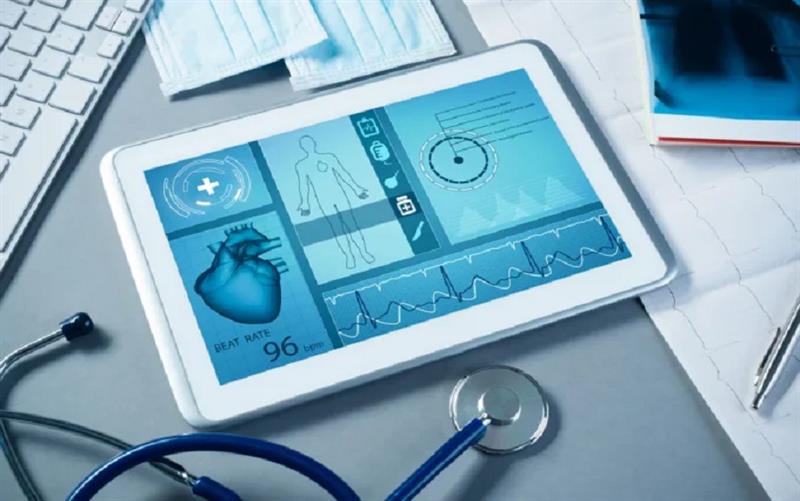
The rise of software-driven patient care in 2024 marks a pivotal moment in the evolution of healthcare. From personalized medicine and telemedicine to AI-driven diagnostics and predictive analytics, software technologies are transforming every facet of patient care. As we continue to embrace these innovations, the future of healthcare looks brighter, more efficient, and more patient-centered than ever before. The integration of these advanced software solutions is not just a trend but a fundamental shift towards a more digital, data-driven, and patient-focused healthcare system.
The rise of software-driven patient care in 2024 marks a pivotal moment in the evolution of healthcare. From personalized medicine and telemedicine to AI-driven diagnostics and predictive analytics, software technologies are transforming every facet of patient care. As we continue to embrace these innovations, the future of healthcare looks brighter, more efficient, and more patient-centered than ever before. The integration of these advanced software solutions is not just a trend but a fundamental shift towards a more digital, data-driven, and patient-focused healthcare system.
1. Personalized Medicine through Data Analytics
Personalized medicine leverages data analytics to tailor medical treatment to individual characteristics, such as genetic makeup, lifestyle, and environment. Advanced software tools analyze vast amounts of patient data to identify patterns and predict how different treatments will affect specific patients.
Genomic Data Analysis: By decoding an individual’s genome, software can identify genetic predispositions to diseases and determine the best therapeutic strategies.
Predictive Analytics: Machine learning algorithms can predict disease progression and treatment outcomes based on historical data, allowing for more precise and effective interventions.
2. Telemedicine and Remote Patient Monitoring
Telemedicine has become an essential component of modern healthcare, allowing patients to receive medical care without needing to visit a healthcare facility.
Virtual Consultations: Patients can consult with healthcare providers via video calls, reducing the need for in-person visits and making healthcare more accessible, especially in remote areas.
Remote Monitoring Devices: Wearable devices and home monitoring systems track vital signs, such as heart rate, blood pressure, and glucose levels, and send data to healthcare providers in real time. This continuous monitoring enables early detection of health issues and timely interventions.
3. AI and Machine Learning in Diagnostics
AI and machine learning are revolutionizing diagnostics by improving accuracy and speed.
Medical Imaging: AI algorithms analyze medical images, such as X-rays, MRIs, and CT scans, to detect anomalies that may be missed by the human eye. This technology is particularly valuable in fields like radiology and pathology.
Predictive Models: Machine learning models can predict the likelihood of diseases such as cancer, enabling earlier and more effective treatment plans.
4. Electronic Health Records (EHR) and Interoperability
The shift towards comprehensive Electronic Health Records (EHR) systems is transforming patient data management.
Holistic Patient View: EHRs integrate data from various sources, providing a complete picture of a patient’s health history, treatments, and outcomes.
Interoperability: The ability of different EHR systems to share data seamlessly ensures that healthcare providers have access to accurate and up-to-date information, facilitating better-coordinated and more effective care.
5. Patient Engagement and Self-Management
Software solutions are empowering patients to take an active role in managing their health.
Mobile Health Apps: These apps enable patients to track their health metrics, manage medications, and access health information.
Wearable Devices: Devices like fitness trackers monitor physical activity, sleep patterns, and other health indicators, encouraging patients to maintain healthy lifestyles.
Patient Portals: Online portals allow patients to view their medical records, schedule appointments, and communicate with healthcare providers, fostering greater engagement and adherence to treatment plans.
6. Robotic Process Automation (RPA) in Healthcare Operations
RPA is transforming administrative tasks in healthcare, improving efficiency and reducing errors.
Task Automation: Software robots handle routine tasks such as appointment scheduling, billing, and claims processing, freeing up healthcare professionals to focus more on patient care.
Error Reduction: Automated processes minimize human errors, ensuring more accurate and timely administration.
7. Blockchain for Security and Transparency
Blockchain technology is being integrated into healthcare software to enhance data security and transparency.
Data Integrity: Blockchain provides a decentralized and immutable ledger of patient data transactions, ensuring data integrity and protecting against unauthorized access and tampering.
Transparent Records: Every transaction is recorded on the blockchain, providing a clear and transparent history of patient data usage and access.
8. Predictive Analytics for Proactive Care
Predictive analytics software uses historical data to forecast future health trends and identify at-risk patients.
Risk Stratification: By analyzing patient data, software can identify individuals at high risk for chronic diseases or complications, allowing for early intervention and preventive care.
Population Health Management: Predictive models help healthcare providers manage the health of populations by identifying trends and targeting interventions to those most in need.